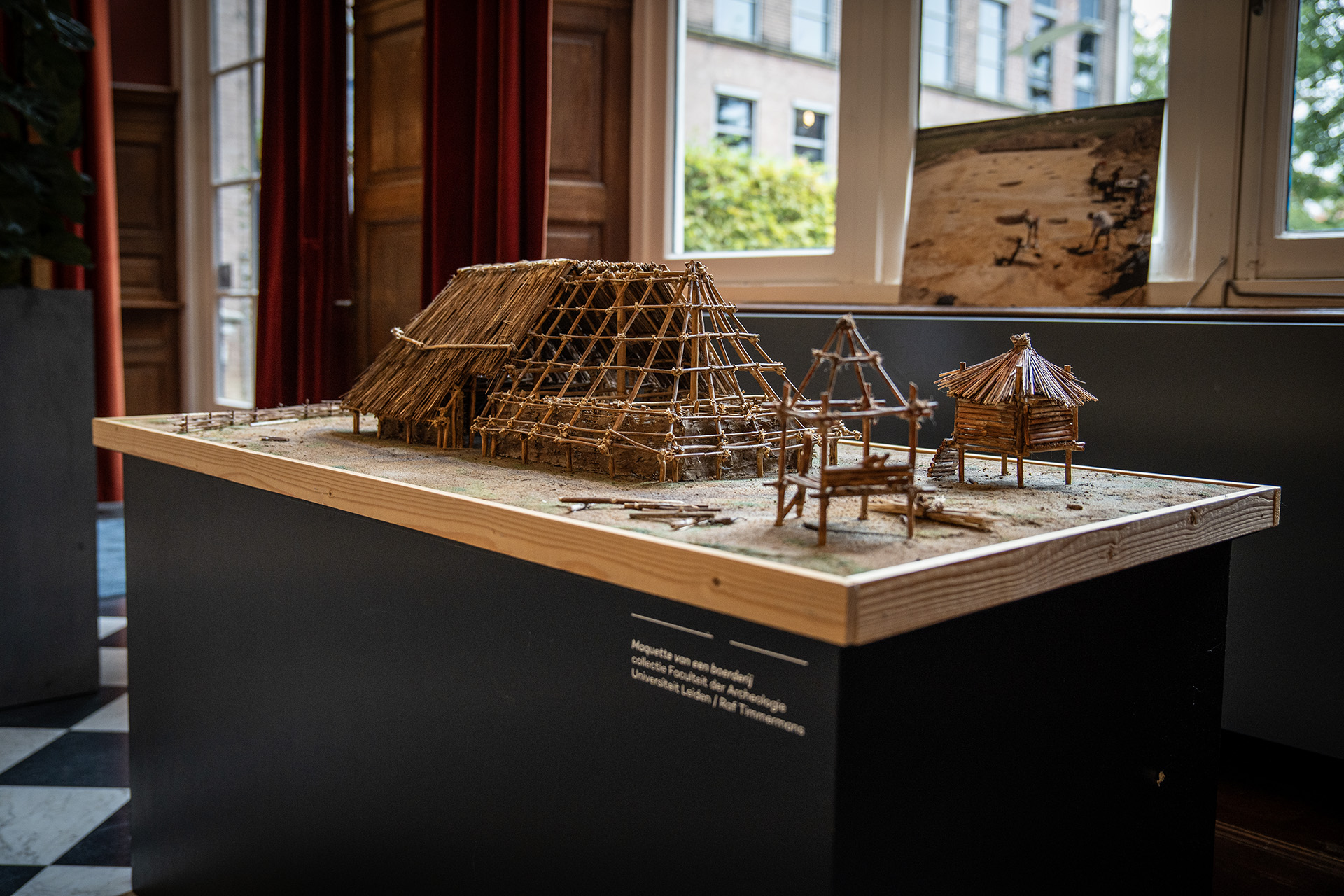
Exhibition featuring 50 years of Leiden’s archaeological excavations in Oss
Princely graves, swords, pots or just soil discolouration. Leiden archaeologists have been conducting research with students and local archaeologists in Oss (in the province of Brabant) for 50 years. An exhibition at Leiden University shows how these finds tell the region’s story.
‘This exhibition features 50 years of archaeological excavations in Oss and shows their importance for research, teaching and society’, says archaeologist and project leader Richard Jansen. He curated the exhibition together with students. The special ties between Oss and Leiden go back to 1933 when archaeologists from the National Museum of Antiquities discovered an impressive princely grave near the town of Oss. The many grave goods such as weapons and jewellery pointed to an important leader buried in the 8th century BC.
In 1974, archaeologists from Leiden University excavated the first floor plan of an Iron Age farmhouse (1200 BC to 550 BC). Following this discovery subsequent generations of Leiden archaeologists and their students headed for the region to learn the tricks of the trade.
Due to the selected cookie settings, we cannot show this video here.
Watch the video on the original website orTens of thousands of archaeological finds
Over the span of 50 years, Leiden researchers and students working with local archaeologists have dug up hundreds of floor plans of houses and countless graves, cult sites, field systems and wells. They have also made tens of thousands of smaller finds including weapons, jewellery and utensils such as pots and tools.
In a video that can also be seen at the exhibition, Jansen and students explain how these archaeological finds tell the story of thousands of years of inhabitation in the province of Noord-Brabant – how people lived and what objects they buried with their dead.
-

-

-

Newspaper articles about the archaeological finds. -

Archaeological fieldwork in Oss.
What is there to see at the exhibition?
The most precious finds are kept at The Dutch National Museum of Antiquities in Leiden or in the provincial depot in Den Bosch. But the Oude UB exhibition also gives a good impression of the results of half a century of archaeological excavations. It features earthenware pots and utensils, sling bullets, stone tools and jewellery such as glass bracelets. There are also replicas including of the sword from the Oss Princely Grave.
The story begins at the end of the Stone Age (3,000 BC), spans the Bronze and Iron Ages (2,000 – 12 BC) and ends with the Roman Empire (250 AD). ‘The oldest object on display is a stone axe that is about 5,000 years old’, says Jansen.
Special ties between Leiden and Oss
The exhibition also explains more about the archaeological excavation process and what the results mean for the local community, says Jansen. Oss cherishes its rich history and, in new housing developments for example, illustrates what has been found there from the past and how people lived many centuries before them. ‘Archaeology and the associated stories are part of the local collective memory’, says Jansen. ‘The university’s research forms the basis of this and creates special ties between the two cities, which at first glance have little in common.’
Alderman Sidney van den Bergh, whose responsibilities include heritage in Oss, praised the collaboration in an interview (in Dutch) earlier this year. ‘The archaeological excavations these past 50 years have brought us so many wonderful results. I think it’s fantastic how the university has gone about this.’
Text: Linda van Putten
Banner photo: Danique ter Horst
